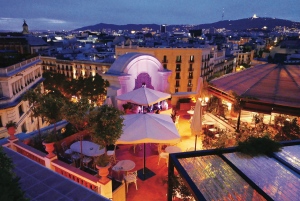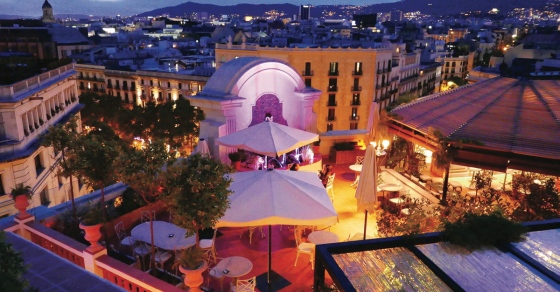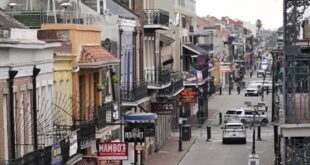
The gathering of a select group of fashion lawyers from around the world that I organize every year was about to begin, this time on a pleasant, sun-washed afternoon in Barcelona, the coastal capital of Catalonia, in eastern Spain.
We had the usual frets about whether to cover the goodie bags with a table cloth until given away (we didn’t) and where to place the podium no one ever uses.
This time would be different, however.
I was staying at the Hotel El Palace, one of the greatest in all Spain, and we had also rented a function room that, as people came in, was correctly compared with something from the kind of romantic movie in which the earnest but dashing prince courts the reluctant princess under spreading chandeliers.
Waiters served a formal tea in the English manner as four attorneys from three continents made brief and effective speeches on the art and craft of fashion law. When everyone left, I received, as if in one voice, the comment, “What are you going to do to top that next year?”
Answer: Some experiences in life are without peer, and that is what a grand hotel in the style of the El Palace quietly reminds you it can provide.
As the 11,000-strong legal convention that drew us all here continued, lawyers kept arriving. During my stay, I took several of them to the hotel’s rooftop, there to have lunch, tapas, drinks, take a dive into the outdoor pool or just take in the view of the city. They all commented how lucky I was to have secured the best venue in town.
Luck in hotel selection during a convention is what happens when you know where to go and book earlier than everyone else. That is especially true in cities such as Barcelona, where the convention centre is far removed from the centre of anything you would leave home and family to see.
Last-minute hotel bookings can lead to interesting surprises, but when it is luxury and convenience you are seeking, properties such as the El Palace are few and demand is high — so foot off the brake and sign up early, even if you end up paying a bit more to do it. It will certainly make you popular.
The next thing to do if you are in a highly desirable city is to leave time for fun — and to invite others to enjoy it with you.
That is how, bearing timed entrance tickets wisely booked online by the El Palace concierge, a veritable delegation of us — this time all Americans and Germans — ended at the Sagrada Familia.
The cathedral-sized masterpiece of a church is still under construction from plans by the architect Antoni Gaudi, the greatest exponent of Modernisme (the Art Nouveau of Catalonia). Ground was broken in 1882, and the building will be finished perhaps by 2026, which marks the centennial of Gaudi’s death at the age of 73, after being struck by a tram.
People who have been there just a few years before say the difference is striking. Inside, at least, it looks about finished.
Traditional church architecture in the Gothic style is referenced in the building, but its columns and spires brush past the commonplace, twisting and rising like trees in a fanciful forest. The sun comes through stained glass of orange, yellow and blue as if filtered through the feathers of an aviary of exotic birds. To see the Sagrada Familia is to see Christianity in a different way, as something closer to an East Asian religion in its quest for harmony with nature and as an invitation for spiritual meditation.
Gaudi is a cultural hero of his native Catalonia, where his major works are to be found, but Picasso moved here as an adolescent, when his father accepted a position teaching art at a local academy. The Museu Picasso, which opened during the master’s lifetime, maintains one of the largest and greatest collections of his works, most notably pieces from the early, formative stages in his career that are under-represented in museums elsewhere.
Picasso contemporary Joan Miro was born in Barcelona, and many of his works are now housed in a museum that translates as Miro Foundation, Center of Studies of Contemporary Art. It is housed in a Modernist building on a verdant hilltop overlooking the city. Although as an art critic, I am not as engaged by Miro’s works as I am by those of Picasso, I could not imagine a better setting in which to understand more completely his contribution to modern art. In a rather typical fashion, three American women (surely from our convention) stood in front of one painting, each with an audio guide, one pointing and saying: “I think those are breasts,” then taking that back and starting over, in consultation with her colleagues.
Lawyers on sightseeing breaks love cultural experiences as much as anyone else, but there is something about conventions, with their utilitarian conference rooms that, wherever they appear in the world, look entirely the same, to make an attorney want to stray off the mark just a bit. That is how another digression from our duty to the law led several of us to the Museu de la Xocolata de Barcelona, which is to say, the Chocolate Museum. Your ticket is a bar of chocolate that you get to keep after scanning it at the entry gate. As we headed to the permanent collection, which details the history of chocolate making and includes Michelangelo’s Carrara marble Pieta reimaged in dark Catalonian chocolate, an American voice behind me called out: “I can’t get in. I ate my ticket.”
A city’s life is what happens while business travellers fly like tennis balls back and forth between conference rooms and museums. Central Barcelona is highly accessible, with clean streets and fine old buildings, most of them on the main avenues fronted by multiple balconies, radiating from squares and plazas. There is something of a Parisian feel to it all.
The only way really to understand that or any other urban environment is to get out and insinuate yourself into as many activities as the locals will allow. Being independent-minded (indeed, there has been an ongoing call for independence from Spain), Catalonians are very open about letting you in on who they are. One popular way is to gather in public places and dance with friends and strangers.
On a Sunday afternoon blessed with cloudless skies and mild temperatures, townspeople formed into a half-dozen circles, holding hands to dance the finely choreographed sardana, the performance of which is seen as a statement of Catalonian pride. Each dancer would arrive and change into flexible shoes called espardenyes, carefully fastening each around the ankle with two long strips of fabric, store possessions in the centre of any circle not yet grown to capacity, and then join in.
An 11-piece band, known as a cobla, played for all from atop the cathedral’s steps, the different circles of dancers moving slowly, gracefully clockwise, like gently turning gears designed always to synchronize, never to mesh.
Local pride goes beyond speaking Spanish with the distinctive lisping sound that turns Barcelona into Barthelona and gracias into grathias. Catalan is co-official to Spanish in this region, but it is the first language on signs and museum wall labels (typically followed by classical Spanish and English); it reads, to my untutored eye, much like a shorthand Spanish with an infusion of French.
And so it went through days of perfect weather, meeting after meeting held (quite deliberately) at or near the El Palace, with time to pass through the food stalls of an historic market, Sant Josep de la Boqueria; a visit to another Gaudi masterwork, a mansion called Casa Batllo; and, this being Spain, to do a buy at one of the Zara shops that are as ubiquitous as Starbucks in Seattle. (Fashion lawyers enjoy a bargain as much as anyone.)
In an event familiar to conventioneers everywhere, the last night of our international gathering was a party on Platje de la Barceloneta — the beach.
We had exclusive access to a row of darkened waterfront taverns into which, after waiting in long lines, crowded thousands of attorneys grown too exhausted to have anything fresh to say to each other.
That could only mean one thing: it had been a successful conference, all in all. Small streams of us departed early, removed our shoes and splashed our toes in the Mediterranean Sea. On the breezy walkway behind us, men selling what might have been tablecloths, each held down by four sandbags, were ordered by the police to pack up and scram.
The sky turned black from royal blue and the sea rolled gently, clearly until the night swallowed all but flashes of moonlight on the peaks of low waves.
[ad_2]You can read more of the news on source
 Travelsmart
Travelsmart



